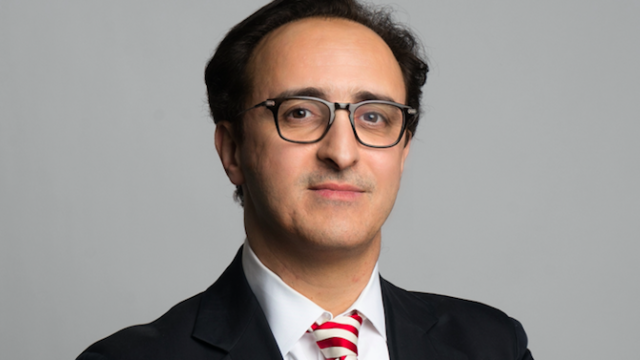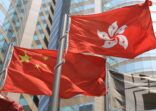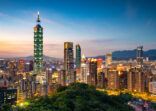Mohamed M’Rabti, Euroclear
“Diversity is really lacking in the Hong Kong ETF space,” he told FSA on a recent visit to Hong Kong, adding that assets are overly concentrated in just a few products.
In total, there are 112 ETFs, excluding leveraged and inverse products, listed in Hong Kong with assets of around $45bn, according to data from the Hong Kong Stock Exchange. However, the top five largest ETFs already account for 71% of total assets.
|
Name of ETF |
AUM ($bn) |
Market share |
| Tracker Fund of Hong Kong |
13.3 |
30% |
| Hang Seng Index ETF |
7.4 |
16% |
| Hang Seng China Enterprises Index ETF |
4.5 |
10% |
| ABF Pan Asia Bond Index Fund |
3.8 |
8% |
| iShares FTSE A50 China Index ETF |
2.9 |
7% |
Source: Hong Kong Stock Exchange
Looking at individual asset classes, Hong Kong equity-focused ETFs account for the largest market share – nearly 50%, followed by China-focused ETFs.
In total, there are about 50 ETFs that are focused on these two markets.
Top 10 asset classes by AUM
| Asset class | # of ETFs | AUM ($m) | Market share |
| Equity – Hong Kong | 8 | 21.1bn | 47.0% |
| Equity – China (Mainland China listed companies) | 29 | 7.9bn | 17.6% |
| Equity – China (Hong Kong listed companies) | 9 | 5.7bn | 12.7% |
| Fixed Income & Currency (including Money Market) | 7 | 4.3bn | 9.6% |
| Equity – US | 6 | 2.8bn | 6.3% |
| Equity – Asia | 5 | 1bn | 2.3% |
| Equity – Global | 7 | 386.9m | 0.9% |
| Equity – India | 2 | 331.8m | 0.7% |
| Equity – Vietnam | 1 | 324.4m | 0.7% |
| Equity – Europe | 8 | 227.6m | 0.5% |
Source: Hong Kong Stock Exchange
This lack of diversification is one of the reasons why so many ETFs in the territory were delisted in the past year, according to M’Rabti.
Last year, 10 firms announced that they were delisting 35 ETFs. Most were focused on China A-shares.
M’Rabti explained that investors will tend to herd into a much larger ETF than a smaller one. Citing China A-share ETFs as an example, he said that investors will tend to crowd into one or two ETFs to get China A-share exposure.
“Why do you need a third ETF for the same access that you can get from a much larger fund?”
On average, for an ETF to become profitable, assets should reach at least $100m, M’Rabti said. “It’s quite expensive to create those ETFs, and if you don’t reach that level, you will have profitability issues. That’s why you see a lot of them delisting.”
The lack of diversification is also reflected in a survey conducted by Brown Brothers Harriman. Although a majority of Hong Kong investors plan to increase their ETF investments in the next 12 months, they would like to see more ETF products across different asset classes. Sixty-five percent of them want to see more global fixed income products and 63% of them want to see more currency-hedged products, as there are only two such ETFs listed in Hong Kong.
Stabs at innovation
M’Rabti noted that there have been some innovations in the Hong Kong ETF market.
“Managers are trying to be more innovative, and an example of this is smart beta, which provides more diversity.”
Premia Partners, for example, launched two China A-share smart beta ETFs in October last year. Premia also criticised the lack of ETF diversity in Hong Kong and believes it has an advantage by focusing on smart beta and on Asia.
Although it is early days, both products have gathered around $67m each in assets, according to HKEX data, and therefore require more time to reach the $100m mark that M’Rabti referred to as the profitable level.
Another innovation in Hong Kong’s ETF market is the launch of leveraged and inverse (L&I) products, according to M’Rabti.
Since Hong Kong’s Securities and Futures Commission allowed the launch of such products in January 2017, 27 L&I products have been listed on the bourse. Total combined assets are around $658m, according to HKEX data. However, this only accounts for 1.4% of Hong Kong’s overall ETF market.
In addition, a number of fund managers have also delisted some of their L&I products, including three from Mirae Asset Global Investments, two from CSOP Asset Management and four from Samsung Asset Management.
“They lacked scale,” M’Rabti said. “In the first place, it was the market makers that generated some traffic, and I think retail investors need more education about L&I products before they really pick up.”
This compares to Korea and Taiwan’s markets, where L&I products are popular among investors, M’Rabti said. In Taiwan alone, L&I products, which were first launched in 2014, accounted for half of the total $9.67bn ETF market in Taiwan as of the end of June last year, according to data from Cerulli Associates.
M’Rabti explained that it was easier for Korea and Taiwan to market L&I products because they have smaller fund markets than Hong Kong and when novelty appears, it stands out.
He is nevertheless optimistic about ETFs in the region. “It is about education and recognising the benefits that ETFs can bring. It is just a question of time,” he said.

















